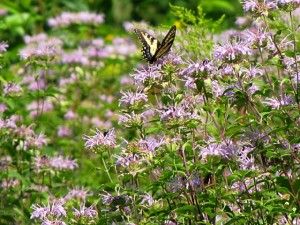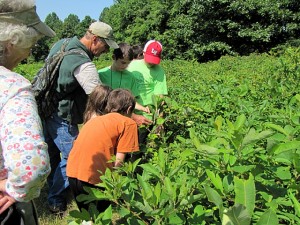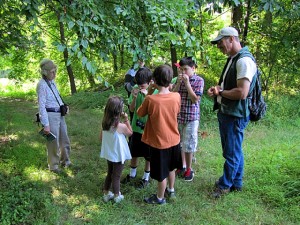Mariton: Plants and Animals
by Tim Burris, Preserve Manager. Photos by Carole Mebus
One way to talk about the inter-connections between plants and animals is to talk about butterflies. Many butterflies are dependent on just a few species of plants for egg laying (where the caterpillars will eat). Remove those plants from the landscape and you can expect repercussions. Many butterflies feed on nectar from flowers, and in the process pollinate them to provide seeds for another generation (of both plants and butterflies). So, butterflies are a great way to talk about plants.
The milkweed seed pods caught the kids’ attention when we got into the meadows. But it is a good walk to reach the meadows and the children asked questions about many of the plants that we saw along the way. Some of those included common mullein, hawthorne, and grape leaves covered with galls.
And then there is the sweet birch (Betula lenta). It doesn’t matter if you are a kid or an old timer. There is something about the smell and taste of wintergreen in the twigs that mesmerizes people. While the kids haven’t learned how to recognize the leaves, they have memorized the locations of the trees. And just like me, they can’t pass by without grabbing a twig and sucking on it. For me, it is fun to watch the experienced campers show the newbies the locations, how to bite the twig and what to do. Normally, I don’t encourage defoliating trees, but there are many places where I purposely don’t trim back branches overhanging the trails in order to provide easy access to those in the know. Hopefully, this will inspire someone to learn how to identify trees just so they can find sweet birch to sample.



